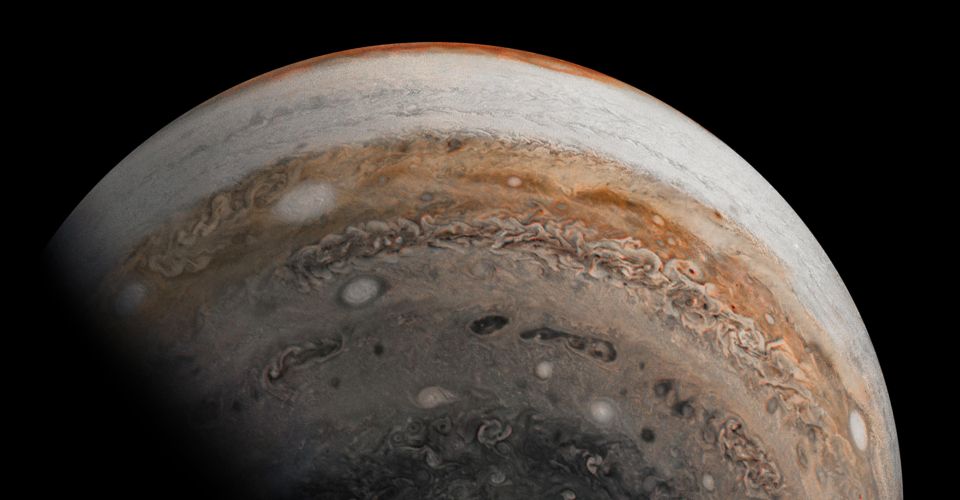What Is A Gas Giant Planet & What Are Some Examples?

Outer space is filled with planets of all different shapes and sizes — some of which come in the form of gas giants. When thinking about planets, it can be easy to assume that they’re all the same. In certain regards, they are. All planets tend to have a circular shape, a gravitational center, and generally have some type of atmosphere. However, the way a world is structured varies from planet to planet.
As it stands, NASA designates planets it finds into one of four distinct categories: Terrestrial, Super-Earth, Neptune-like, and Gas giant. Terrestrial planets are rocky worlds beyond our Solar System, often composed mostly of rock or iron. Super-Earth and Neptune-like planets are self-explanatory. The former represents planets that are larger than Earth, while the latter is a gaseous planet similar in size to Neptune. But what about gas giants? What makes these planets unique compared to the other categories?
Gas giant planets are exactly what the name implies — large planets composed almost entirely of gas. Gas giants typically consist of helium and hydrogen. They also don’t have a solid surface as you’d find on Earth and Mars. If someone were to visit a gas giant planet, they’d be surrounded by nothing but clouds of swirling gas. And, of course, gas giants are big. They can be similar in size to Jupiter or even larger. In NASA’s own words, “Gas giant exoplanets can be much larger than Jupiter, and much closer to their stars than anything found in our solar system.”
Examples Of Gas Giant Planets

There are multiple examples of gas giants within our own Solar System — including Jupiter, Saturn, Uranus, and Neptune. All of the planets are quite large, but even the size of gas giants can vary considerably. Neptune, for example, has a radius of 15,299 miles. It’s substantially larger than the 3,958-mile radii of the Earth, but much smaller than Jupiter’s 43,441-mile radii. Jupiter also has a mass 2 and 1/2 times greater than all of the other planets in the Solar System combined. Add that and its radius together, and Jupiter is the perfect embodiment of what a gas giant should be like.
Looking beyond the Solar System, however, gas giants can become even larger than Jupiter. One of the most famous gas giants outside the Solar System is 51 Pegasi b. Discovered in 1995, 51 Pegasus b has roughly half the mass of Jupiter while having a radius 1.27 times its size. It’s around 50 light-years from Earth, orbits a yellow dwarf star, and has a stunning orange color. Even more impressive is a gas giant known as HD 100546 b. Located 358 light-years from Earth, HD 100546 b is unimaginably huge. It has a mass 752 times greater than Jupiter and a radius that’s 6.9 times larger. It’s one of the largest gas giants ever discovered and proves just how huge these planets truly are. Other interesting gas giants are KELT-9b and Kepler-7b. KELT-9b is best known for its extremely hot temperatures capable of melting molecules on the planet. Kepler-7b has a bizarre composition which makes its density very similar to Styrofoam.
And that’s the elevator pitch for gas giants! They’re large, dense, and gaseous planets — often among the most impressive in the universe. There won’t ever come a day where humans can explore or live on a gas giant (at least not any time soon), but studying them from afar has still provided astronomers with enormous knowledge about them and the galaxy. Whether it be Jupiter, HD 100546 b, or any of the other gas giants out there, they’re prime examples of how varied and unique outer space can be.
Source: NASA
About The Author


















